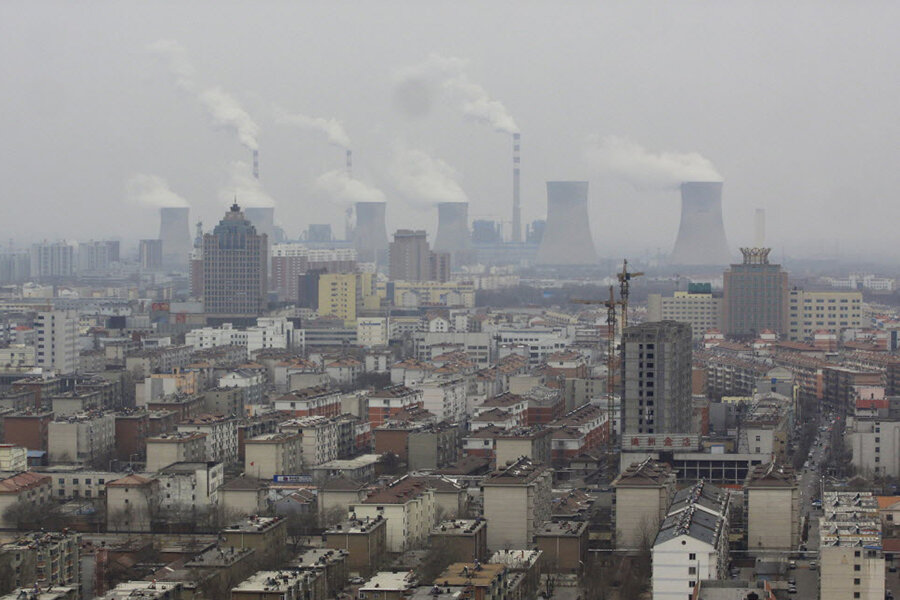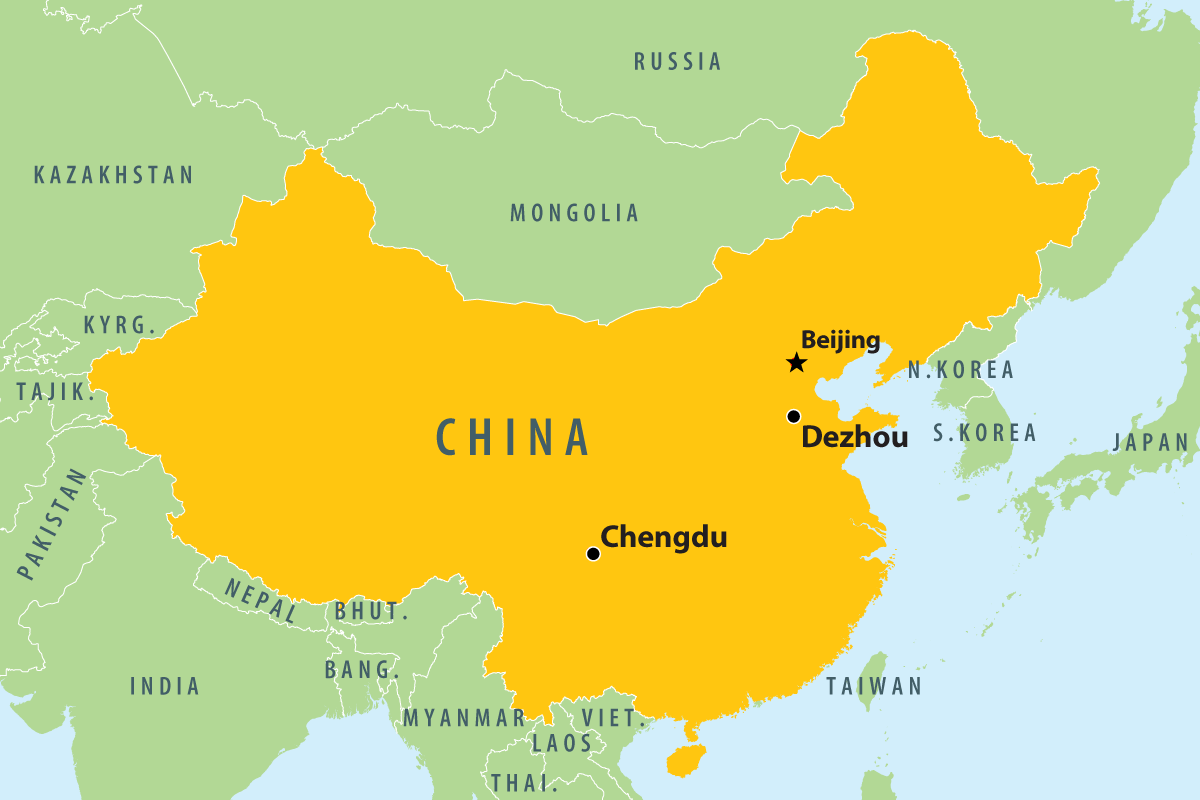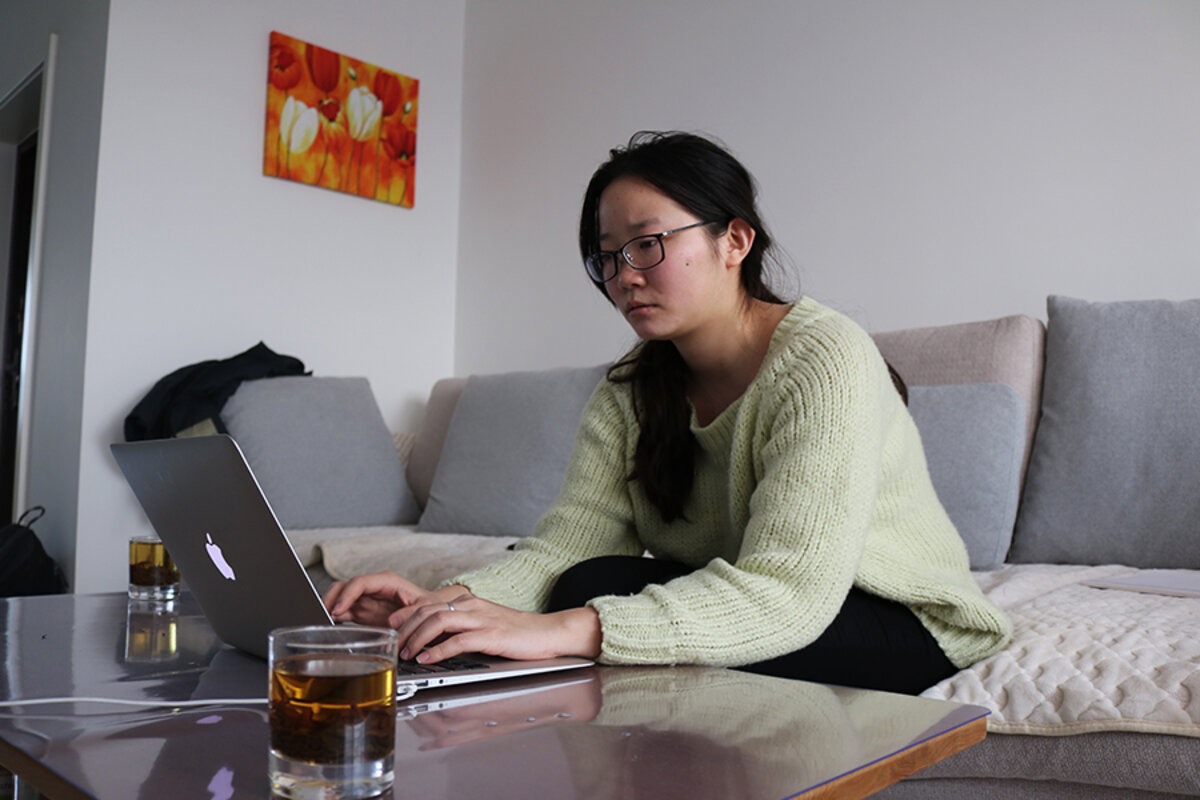China embraces public activists – in battling pollution
Loading...
| Dezhou, China
Duan Shumin is still getting used to her new surroundings on the outskirts of this city in Shandong province, some 200 miles south of Beijing. Factories that make everything from asphalt to xylitol, a sweetener used in gum, line the roads leading to the apartment she moved to last July. On a recent afternoon, the air is thick with the scent of petroleum and burnt plastic.
“This is an average day,” Ms. Duan says while stopped at an intersection in her black SUV. She has rolled down the windows to make her point. “When the smell is really bad it makes me feel like I’m going to vomit.”
Fed up with what she considers half-hearted efforts to curb industrial emissions – the source of the smell – Duan has taken to Weibo, the Chinese equivalent of Twitter, to report on polluting factories. Every day she or a friend posts a photograph of a different location in the city along with current air pollution levels. She uses a mobile app to look up real-time emission data from surrounding factories and writes public messages to notify environmental-protection officials of violators. She has also created a discussion group on WeChat, the Chinese mobile-messaging service, to recruit other local residents to her cause.
“Public awareness is growing and the government can’t stand the pressure,” Duan says. “It has to do something about it.”
Surprisingly, China is not only tolerating such grassroots activism – it is cautiously embracing it as it moves to address the environmental toll of three decades of intense economic growth. While the ruling Communist Party has long restricted political expression and participation in the interest of social stability, it has come to realize that going after polluters is easier with a public empowered by social media tools and access to real-time emissions data.
Alex Wang, an assistant professor at the UCLA School of Law who specializes in Chinese environmental law, writes in a soon-to-be published study that the overlapping interests of citizens and the nation’s leaders have “enabled the seemingly paradoxical flowering of disclosure law in China.” That has led the government to demand that more than 15,000 factories and plants release hourly emissions data – a requirement, Professor Wang writes, “seen nowhere else in the world.”
“Chinese officials see information disclosure as useful,” he says in an email. “It encourages citizens to assist in environmental enforcement. Armed with information about factory emissions, they can now target bad actors and place pressure on them to reform.”
Environmental protection officials have forced hundreds of factories to reduce their emissions in response to public complaints raised on social media over the last three years, according to the Institute of Public and Environmental Affairs (IPE), a Beijing-based nongovernmental organization.
Blue skies ahead?
Official data show an improvement in China's air quality since Premier Li Keqiang declared a “war on pollution” in 2014. The country’s coal consumption, a major source of carbon dioxide emissions, dropped in 2016 for a third year in a row. Meanwhile, the use of renewable energy sources has steadily increased.
But as the world’s largest greenhouse gas emitter, China has a long way to go if it hopes to hit pollution reduction targets this year that the government set in 2013. They include a 25-percent reduction in the density of fine particulate matter known as PM2.5 in Beijing and the surrounding region from 2012 levels.
In a speech earlier this month in Beijing, Premier Li pledged that the government would step up its efforts to “make our skies blue again.” His list of smog-busting measures includes plans to upgrade coal-fired power plants to achieve low emissions, encourage the use of clean-energy cars, and hold “fully accountable” officials who fail to enforce environmental laws and regulations.
What most caught the attention of Ma Jun, one of China’s most prominent environmentalists and the director of IPE, was Li’s promise to place “all key sources of industrial pollution” under 24-hour online monitoring. In the absence of a robust legal system, Mr. Ma says the disclosure of emissions data is the best way to improve enforcement of environmental protection laws. It can be especially helpful in putting public pressure on local governments that have strong economic and political ties to polluting companies.
“It’s a mechanism to help differentiate between good and bad factories and to promote those that want to do better,” says Ma. “I do think this is the biggest opportunity to get blue skies back more quickly.”
Li’s pledge was short on specifics. It follows a rule issued by China’s Ministry of Environmental Protection in 2013 that requires all provinces to create online platforms for disclosing factory emissions data. The establishment of that rule was an important milestone for Ma, whose ultimate goal is to “make every smokestack transparent.” In June 2014, his institute launched a mobile phone app called “Blue Sky” to make the newly released emissions data easily accessible.
“If you sit on a high building in any city,” Ma says, “you should be able to use your cellphone to tell whether every factory you see is in compliance or not. That’s not impossible. It’s a real possibility.”
The “Blue Sky” app allows users to track real-time emissions from more than 12,000 factories and plants across China and write complaints to local environmental protection bureaus (EPBs) on Weibo. It has been downloaded more than 3 million times and averages about 20,000 daily users.
So far, more than 650 companies have addressed reports about excessive emissions filed by app users. More than half of the responses have come from Shandong, one of China’s most polluted and industrialized regions.
Shandong was quick to embrace the practice after a groundwater pollution scandal in 2013 sparked widespread public outrage. Since then the provincial EPB has ordered more than 2,000 enterprises to release hourly data about their water and air emissions. It has also created an official Weibo account for public outreach and required every city, town, and county-level office to do the same.
“We are fully using the public power to fight a people’s war for environmental protection,” an EPB spokesperson said in an emailed statement.
IPE says 100 facilities in Shandong have worked to reduce their emissions in response to complaints shared through the “Blue Sky” app. One of the biggest success stories came in 2014, when the EPB responded to complaints about a polluting steel factory in the provincial capital of Jinan by forcing it to shut down two production lines.
Shandong’s openness to public participation is partially what led Duan to join a network of about 200 volunteers that monitor factories across the province. On a recent Sunday morning, she met with five others at a sparsely furnished apartment in Dezhou to discuss their plans for this year.
Guo Yongqi, the founder of an environmental group called Green Qilu, led the meeting. He told the volunteers that he wanted them to use the “Blue Sky” app to report on 10 new factories every month and to collect more on-the-ground evidence. He even bought a drone so they can take aerial shots of polluting factories. While Duan and some of the other volunteers were dismayed by the government’s slow response to their complaints, Mr. Guo encouraged them to stay vigilant.
“What we’re doing is telling the EPB that this is something you should look and not ignore,” he says the next day, as he recounts the meeting. “If there’s pollution, you need to explain the reasons for it and the measures you are going to take to fix it.”
Guo says authorities haven’t tried to suppress or censor him despite the sensitivity of his work. Still, Wang warns that Beijing keeps a close eye on grassroots environmental activism for fear of it leading to social unrest. The government’s challenge is to balance its need for public support in regulating polluting industries with its compulsion to clamp down on any sort of activism that could undermine its legitimacy.
A reminder of that came in December, when police broke up a small group of people wearing masks at an anti-pollution demonstration in the southwestern city of Chengdu. Then, in February, police in the northern city of Daqing cracked down on protesters opposed to the construction of an aluminum plant.
“Participation and transparency act as a safety valve, releasing pent up social pressure that builds up when citizens are left in the dark with no channels of recourse,” Wang says. “Officials likely have faith in their ability to prevent citizens from straying beyond acceptable political limits.”
But what if the government ignores or fails to respond to their concerns? The question then becomes how far they’re willing to push, or, as Wang write, “How high are the costs of playing along?”
Xie Yujuan contributed reporting.







